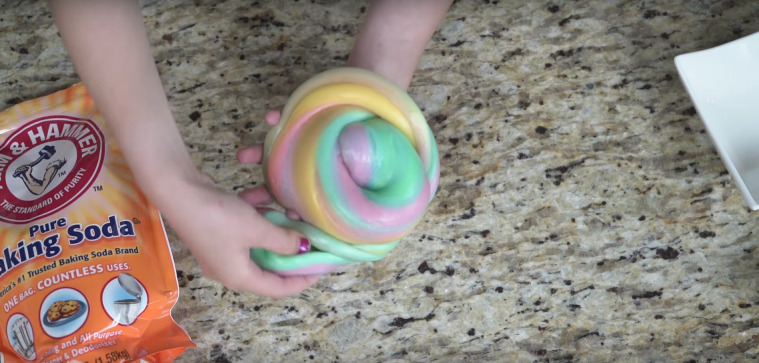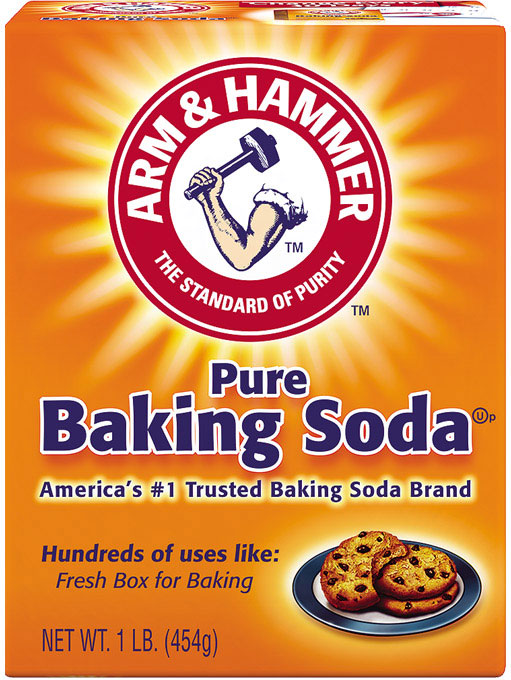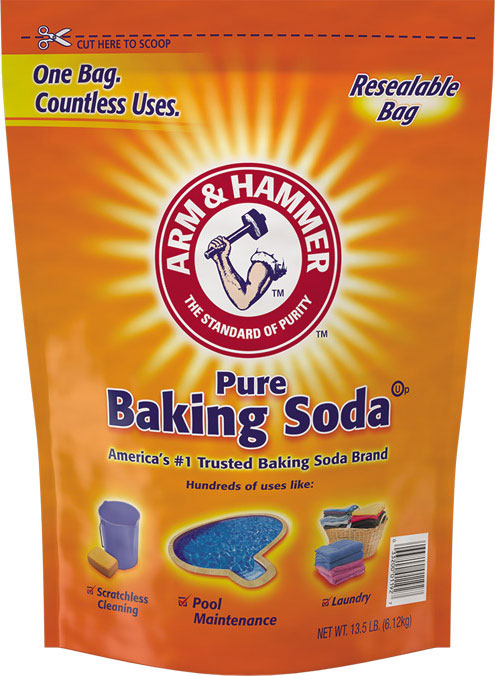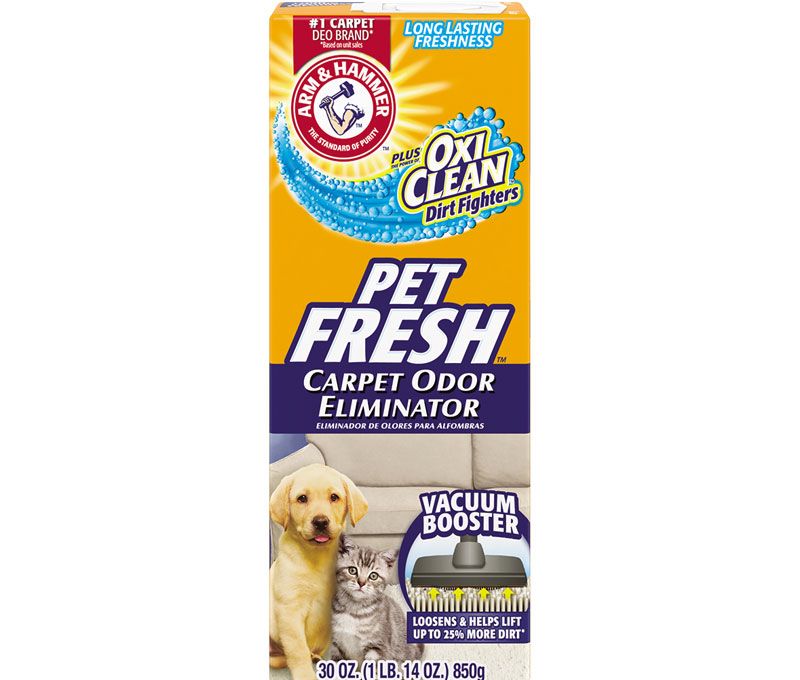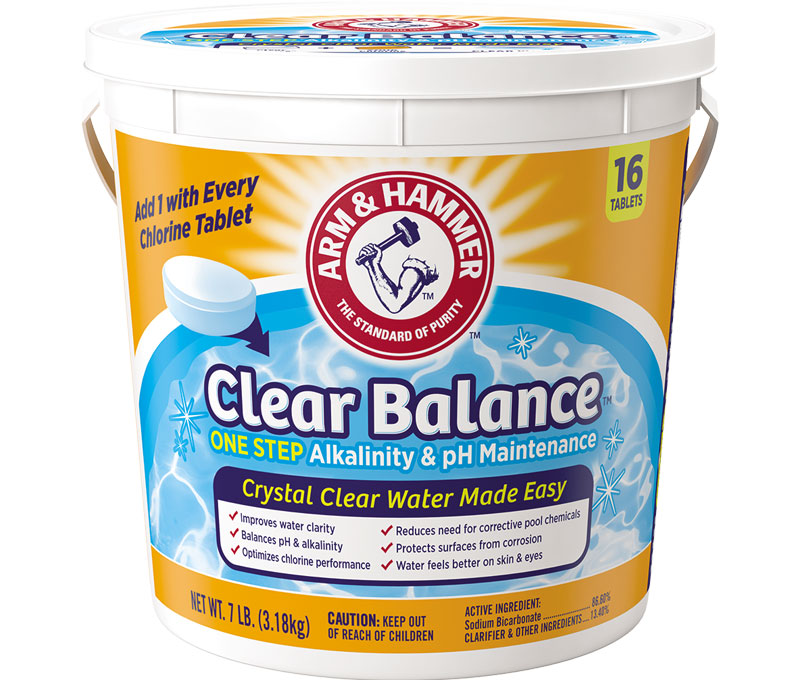How to Make a Slime Activator with Baking Soda
A simple and effective baking soda slime activator you can make is four pinches (about 1/2 tsp.) of pure baking soda and 3 tablespoons of multi-purpose contact lens solution. This amount is just right to mix with a 4-6-ounce bottle of glue.
In addition, baking soda can help rescue slime that has gone wrong. Many times, slime can come out too runny, and it doesn’t hold together well for squishing and kneading. Adding baking soda to your slime recipe helps it have more form and firmness.
If your slime is too oozy-gooey, add another pinch of baking soda to help it firm up. Continue adding baking soda a pinch at a time until the slime is your preferred consistency. If it’s too firm, add warm water, a teaspoon at a time. Everyone has their perfect slime feel; some like it gooier and drippier, while others prefer it to be more solid and stretchy. Baking soda helps calibrate your slime recipes.
How to Make Slime with Baking Soda and Glue
You can learn how to make slime with glue and baking soda easily. There are only three ingredients in this simple baking soda slime recipe.
- 1 4-6 oz bottle of white liquid all-purpose glue or washable school glue
- 1/2 teaspoon Arm & Hammer baking soda
- 1½ tablespoon buffered or multipurpose contact lens solution
- Optional: few drops of liquid food coloring to give your slime color
- Optional: Add 2 tbsp up to 1/2 cup warm water to make your slime stretchier and oozier.
Pour the glue into a bowl. In a separate small bowl or measuring cup, add the baking soda, contact lens solution and food coloring, if you are using it. Combine the baking soda solution with the glue and mix with a spoon or with your hands. The slime will be quite sticky at first, but will get less so with additional kneading. Adjust the texture to your preference by adding a pinch more baking soda for firmer slime and a bit more water for oozier slime.
Check out our video below to see tie-dye smile making with baking soda and glue in action.
How to Make Slime with Glitter Glue and Baking Soda
Making slime with glitter glue and baking soda is easy if you’re already familiar with the basic slime recipe. Instead of using white glue, however, use clear glue instead. You can purchase a bottle of premixed glitter glue in your choice of colors, or you can mix up your own by adding fine glitter and food coloring to the clear glue.
Clear glue is not quite the same as white glue, so you’ll need to adjust your recipe slightly.
- 4 oz. bottle of clear glue or colored glitter glue, squeezed into a bowl
- 3 tbsp buffered or multipurpose contact lens solution, added to glue
- 1 tbsp fine colored glitter (if not using premixed glitter glue)
- 2 tsp Arm & Hammer baking soda
- 1 cup hot water from the tap
Dissolve the baking soda in the hot (not boiling water) and let cool to room temperature.
After mixing up your glue and contact lens solution, slowly add the baking soda and water a little at a time, mixing thoroughly as you go. Add until the slime is your preferred texture. Do not add the water all at once as you may not need it all. With this method, your slime will be more transparent and, well, sparkly.
How to Make Slime with Baking Soda and Contact Lens Solution
You’ve probably already noticed that both of the above recipes use baking soda and contact lens solution to make slime. Most baking soda slime recipes rely on both ingredients.
The ratio of baking soda to contact lens solution you use affects the texture of your slime. Slime of all textures is fun to play with as it provides different sensory stimulation. Plus, kids like to experiment and see the different results.
- For a thicker, grittier texture sometimes known as “sand slime,” use 1 tbsp baking soda and 1 tbsp contact lens solution to your 4-6 oz of glue.
- For a stretchy but firmer texture, use ½ tbsp baking soda and 1-2 tbsp contact lens solution. Optional: 1 tbsp water.
- For the ultimate in an oozier, gooier slime texture, use 1/4 tsp baking soda and 1 tbsp contact lens solution. Optional: 1 tbsp water.
How to Make Slime with Baking Soda and Shampoo
If your kids are clamoring for slime but you don’t have any contact lens solution in the house, you can still make up a batch with this easy recipe using ingredients you have on hand. If you’re wondering how to make slime without contact lens solution, all you need is baking soda and shampoo or dish soap.
- 1 cup Arm & Hammer baking soda
- Shampoo or dish soap (about 1 tbsp)
- Optional: food coloring
This slime recipe is imprecise, so don’t worry about being exact with your measurements. Pour the 1 cup baking soda into a bowl. Squirt approximately 1 tbsp of dish soap or shampoo into the baking soda and stir. The slime will have the color of the shampoo or dish soap; add food coloring if desired. Add more shampoo until you have a creamy substance.
If you accidentally add too much shampoo and your slime becomes too runny, add a pinch more baking soda. Experiment to obtain the texture you prefer. Plain shampoo works best, but it will still work with a 2-and-1 shampoo plus conditioner. The resulting texture will be softer and more slippery.
Borax vs. Baking Soda for Slime Recipes
Many slime recipes call for powdered borax diluted in water as the slime activator. However, borax is designed for cleaning and its own warning label cautions against prolonged contact with the skin. Furthermore, borax should not be ingested or come in contact with the eyes.
Since slime is meant to be played with, many parents are concerned about kneading, holding, and squishing slime that contains borax. In addition, young children often touch their eyes or put their fingers in their mouths during play. If your children have been squeezing slime that contains borax, there’s a chance they could get some into their eyes or tummies, or irritate their throats and lungs by inhaling the odor.
If you’re worried about the safety of slime that contains borax, you can use Arm & Hammer baking soda in your slime recipes instead. Baking soda slime is a good alternative to slime containing borax. Plus, you probably already have a box of baking soda in the house.
Why Slime is So Cool for Kids of All Ages
If you have kids or grandkids, you likely know about slime. The squishable, moldable, DIY polymer is popular with kids of all ages, and the appeal of kneading, twisting, and squeezing slime doesn’t show signs of slowing.
Slime is a non-Newtonian compound, which means it doesn’t behave like a solid or a liquid. It doesn’t have its own shape; slime will fill whatever container it is placed in. You can pick it up like a solid, but it oozes like a liquid. It is elastic and stretchy and will even bounce like a ball. No wonder kids are obsessed with it!
Slime is made when a polymer interacts with a gelling agent. Typical slime recipes call for clear or white PVA glue (the polymer) and an activator (gelling agent). The activator is usually powdered borax dissolved in water, liquid starch, eye drops, or contact lens solution.
When the activator and polymer are combined, a unique chemical reaction occurs creating that signature slime texture. The result: a combined substance with weak bonds that stretch before breaking and fascinate young and old for hours.
